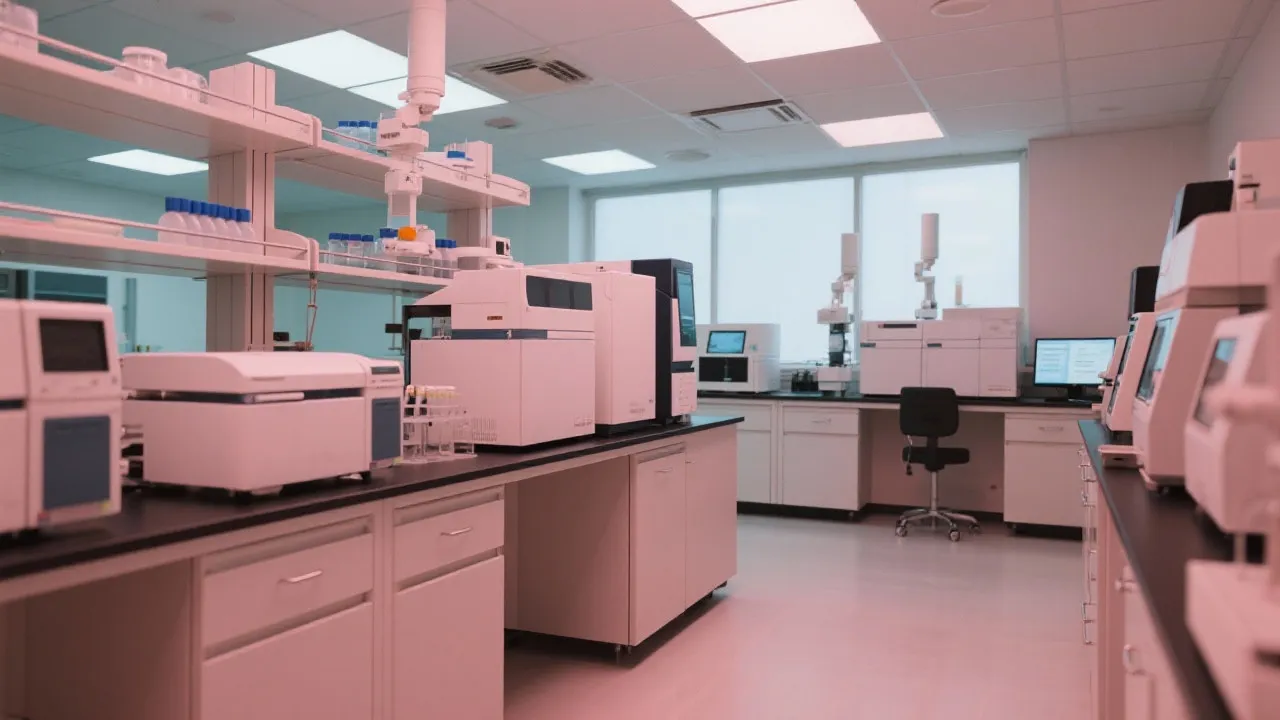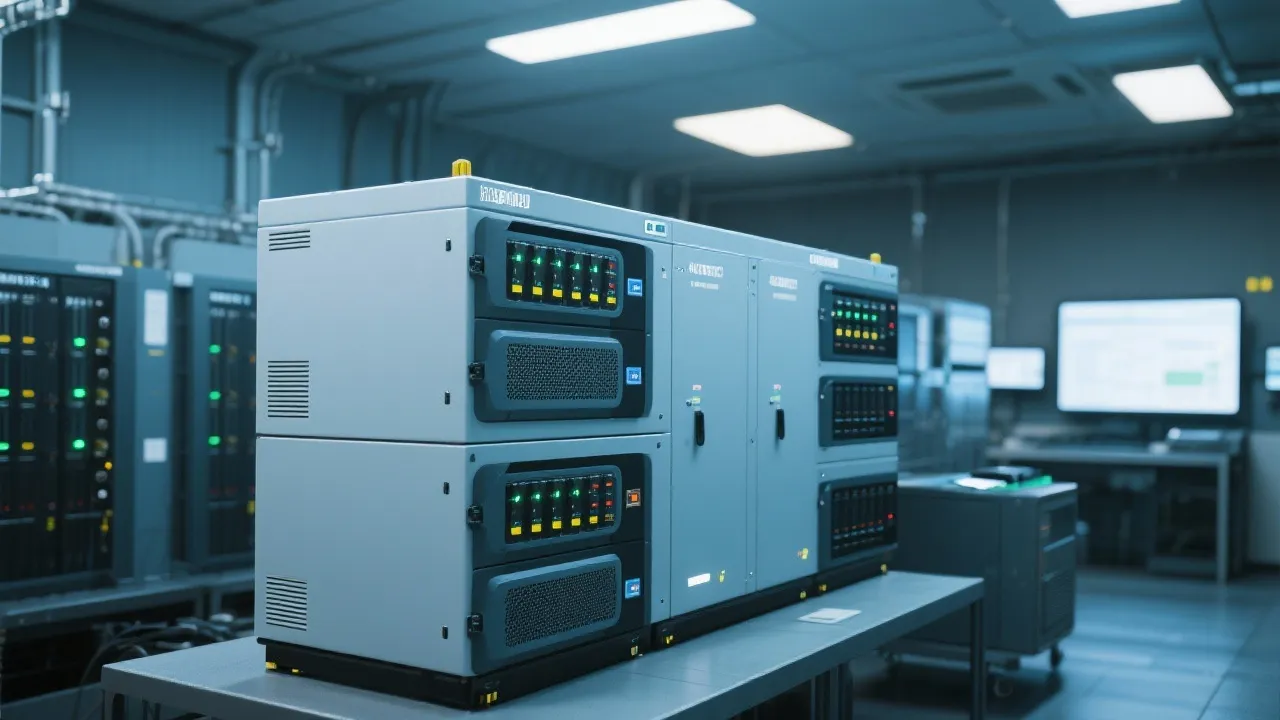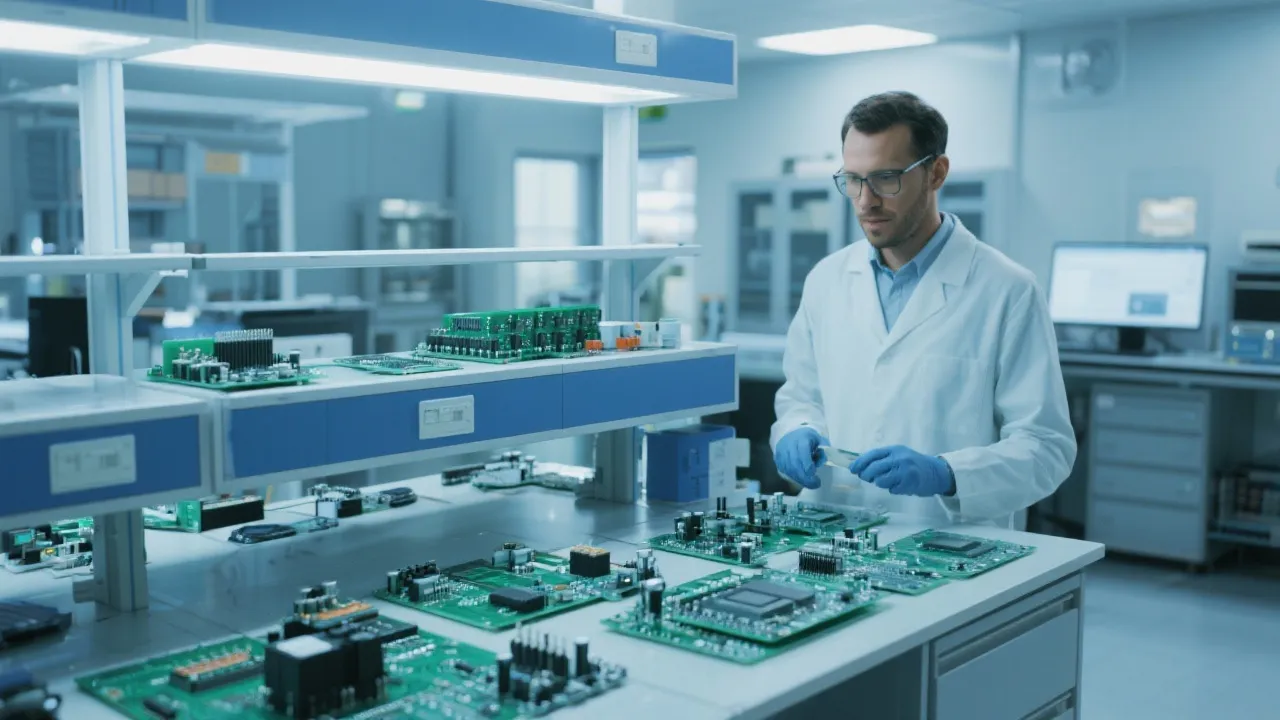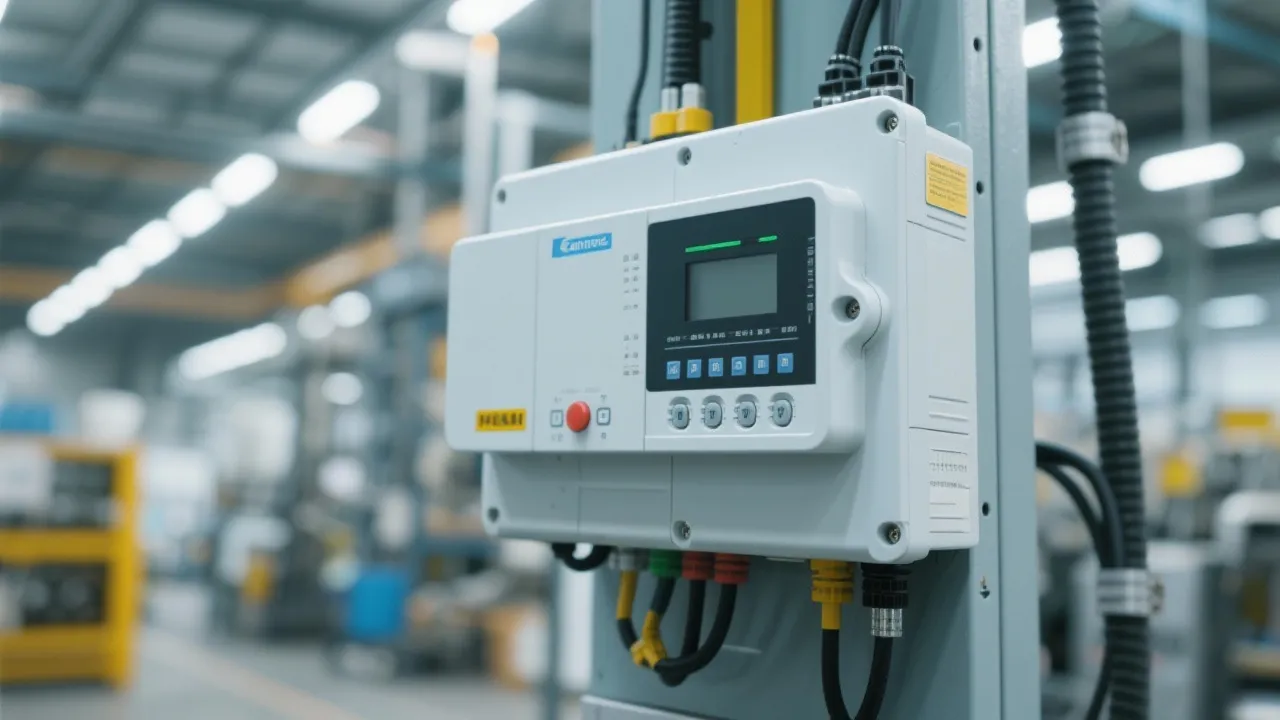Understanding the Agilent 5977b Detector
The Agilent 5977b is a sophisticated mass spectrometry instrument integral to modern analytical laboratories. Offering high sensitivity and precision, it is designed for varied applications, from environmental analysis to pharmaceuticals. This article delves into the features, industry applications, and considerations for selecting the Agilent 5977b, reflecting its significance in the research and industrial sectors.

Introduction to Mass Spectrometry
Mass spectrometry is a powerful analytical technique used for identifying compounds and determining their molecular and elemental compositions. It operates by ionizing chemical species and sorting the ions based on their mass-to-charge ratios, providing valuable data that can inform a wide array of research and industrial applications. Among the diverse array of instruments available, the Agilent 5977b stands out for its advanced capabilities and versatility in various fields including pharmaceuticals, environmental testing, and biochemical research. This instrument not only enhances the analytical throughput but also allows for deeper insights into complex mixtures, making it a preferred choice among scientists and researchers.
Features of Agilent 5977b
The Agilent 5977b is renowned for its enhanced sensitivity and selectivity, which allow for precise detection even at trace levels. This is particularly important when analyzing low-abundance compounds that may play significant roles in biological or chemical processes. With a user-friendly interface and robust analytical performance, it is a top choice for laboratories aiming for high throughput and accuracy. Key features include integrated electronics, advanced ion source technology, and compatibility with a broad range of chromatographic systems.
One of the standout features of the Agilent 5977b is its innovative electron impact ionization method, which enhances the mass spectral quality and enables the effective analysis of complex matrices. The system also incorporates a range of optional ion sources that can be easily swapped, allowing for tailored analysis based on specific application needs. Furthermore, the high-resolution capabilities of the mass analyzer produce detailed spectra that can lead to better compound identification and quantification.
Applications in Industry
The instrument's applications span numerous industries. In environmental laboratories, the Agilent 5977b is used to analyze pollutants and contaminants, ensuring compliance with stringent regulatory standards. Studies have shown that using this instrument can significantly improve the detection limits of various environmental toxins, which is crucial for protecting public health and safeguarding ecosystems. Pharmaceutical industries utilize this instrument for drug testing and formulation analyses, benefiting from its ability to deliver reliable and reproducible results quickly. The speed and accuracy of the Agilent 5977b streamline the drug development process, allowing for more efficient testing of drug candidates and ensuring that only the safest and most effective pharmaceuticals reach the market.
Moreover, in the food and beverage industry, the Agilent 5977b is employed to ensure product safety and quality. It can detect contaminants, additives, and any unintended substances present in food products. The instrument is also adept at analyzing flavor compounds and helps in formulating beverages with specific taste profiles. This capability allows food manufacturers to adhere to safety regulations and consumer preferences simultaneously, which is essential in today’s competitive market.
Comparison to Other Instruments
In comparison with other mass spectrometers, the Agilent 5977b offers a competitive edge in terms of operational efficiency and cost-effectiveness. While some instruments may provide higher resolution or specialized functions tailored for niche applications, the 5977b strikes a balance between performance and ease of use, making it ideal for high-volume laboratories where swift turnaround is crucial. Laboratories often face the challenge of maximizing efficiency while maintaining high analytical quality, and the Agilent 5977b meets these demands remarkably well.
For example, while competitors like the Thermo Scientific Q Exactive may excel in high-resolution mass spectrometry, they come with extended downtime for maintenance and may require more complex training for new users. In addition, operating costs for such highly specialized instruments can be disproportionately high, making them less ideal for routine analysis in a high-throughput setting. Conversely, the Agilent 5977b’s design focuses on minimizing downtime and maximizing user experience, hence reducing the overall cost of operation. This combination of features and results suggests that the Agilent 5977b is particularly well suited for laboratories with diverse and dynamic testing needs.
| Instrument | Strengths | Weaknesses |
|---|---|---|
| Agilent 5977b | High sensitivity, reliable, user-friendly, versatile | Higher cost of maintenance compared to basic models |
| Competitor Model X | Higher resolution, specialized capabilities | Complex operation and higher learning curve, increased operational costs |
| Competitor Model Y | Lower initial cost | Limited functionality and may not meet high-throughput needs |
Considerations for Purchasing
When considering the Agilent 5977b, potential buyers should assess their budget, the specific requirements of their analyses, and the availability of technical support. The total cost of ownership includes not only the purchase price but also expenses related to training, maintenance, and consumables. In many cases, organizations may overlook the long-term operational costs of the equipment during the purchasing phase, which can lead to budget overruns later on. Therefore, it would be prudent to create a comprehensive financial plan that encompasses the entirety of the instrument's life cycle.
The laboratory's specific needs should significantly influence purchasing decisions as well. For example, research institutions focusing mainly on proteomics may need specialized accessories for the Agilent 5977b tailored to their specific analyses, while environmental labs might prioritize different functionalities. Moreover, labs must consider the availability of necessary service agreements and technical support. Uptime is critical in research settings, and having a solid support plan often determines the effectiveness of the instrument in high-demand scenarios.
FAQs
- What is the primary function of the Agilent 5977b? The primary function is to analyze chemical compounds using mass spectrometry, offering detailed insights into molecular composition, structure, and concentration.
- Is the Agilent 5977b suited for beginner labs? While beginners might find it sophisticated, its user-friendly design makes it accessible with proper training and support. The intuitive software interface and guided workflows can significantly reduce the learning curve for newcomers.
- What industries benefit the most from the Agilent 5977b? Industries like pharmaceuticals, environmental science, food safety, and forensic analysis significantly benefit from its precise analysis capabilities. In addition, academic research institutions find it invaluable for both instructional laboratories and cutting-edge research projects.
The Agilent 5977b stands as a critical tool for modern laboratories, reflecting the technological advancements in mass spectrometry. Its versatility and precision make it an invaluable asset for diverse analytical demands. With the growing push for more accurate and rapid results in scientific research and industrial applications, mass spectrometry as a technique continues to evolve, and the Agilent 5977b is at the forefront of this transformation, embodying the principles of innovation and efficiency.
Future Trends in Mass Spectrometry
As technology continues to evolve, the field of mass spectrometry is witnessing several burgeoning trends that may impact the use of instruments like the Agilent 5977b in the coming years. One of the most significant trends is the integration of artificial intelligence (AI) and machine learning algorithms within mass spectrometry data analysis. This development has the potential to dramatically enhance the accuracy and speed of data processing, enabling researchers to obtain insightful results from complex datasets in real-time.
Furthermore, there is a growing focus on miniaturization and portability in mass spectrometry instruments. Portable mass spectrometers can offer rapid field analysis capabilities, enabling on-site testing which is increasingly demanded in environmental monitoring and food safety. Advances in microfluidics and miniaturized components may lead the way for these instruments to become more compact without compromising their analytical power. The Agilent 5977b, known for its robust performance, may adapt to these innovations, potentially offering light-weight options for specific applications.
Another emerging area in which mass spectrometry is gaining traction is in the field of proteomics and genomics. As the importance of biomolecular analysis grows in personalized medicine, the demand for precise and rapid analysis techniques will likely result in further developments in mass spectrometry technology. The ability to conduct comprehensive analyses of biomolecules swiftly opens new avenues in the discovery of drug targets and understanding complex biological pathways.
Moreover, the intersection of mass spectrometry with other analytical techniques, such as chromatography or nuclear magnetic resonance (NMR) spectroscopy, is also a significant trend. Utilizing these techniques in tandem allows scientists to leverage the strengths of each method, gaining a more complete understanding of chemical and biological samples. Information obtained through mass spectrometry can provide vital insights into molecular interactions and dynamics, enriching the data obtained through other analytical technologies.
Challenges and Considerations
While the advancements in mass spectrometry technology continue to present new opportunities, several challenges accompanying these developments deserve consideration. The high operational costs associated with mass spectrometry instruments, including maintenance and consumables, may pose a financial barrier for some laboratories. Organizations must weigh the initial investment against the potential return on investment, particularly in sectors with tighter budgets.
Additionally, the complexity of data generated by mass spectrometry often requires skilled personnel for thorough analysis and interpretation. Training and retaining qualified staff can be a continual challenge, and laboratories must be proactive in addressing this need. Automation in data handling and analysis may alleviate some of these pressures, but there remains a skill gap that needs addressing in the workforce.
Lastly, ensuring the consistent performance and calibration of mass spectrometry instruments is crucial for producing reliable data. Routine maintenance and adherence to standard operating procedures are necessary for achieving optimal performance, which can be a significant operational toll in busy laboratories. This underscores the importance of having dedicated technical support and a service plan tailored to the unique needs of each laboratory.
Conclusion
The Agilent 5977b represents a remarkable evolution in the field of mass spectrometry, offering advanced analytical capabilities across a variety of industries. Its combination of high sensitivity, user-friendly interface, and versatility makes it an excellent investment for laboratories aiming to enhance their analytical capabilities. As the fields of science and technology continue to develop, the Agilent 5977b is poised to be at the forefront, adapting to new challenges and driving innovation in mass spectrometry analytics, providing researchers and practitioners with the tools they need for success in a rapidly advancing world.










